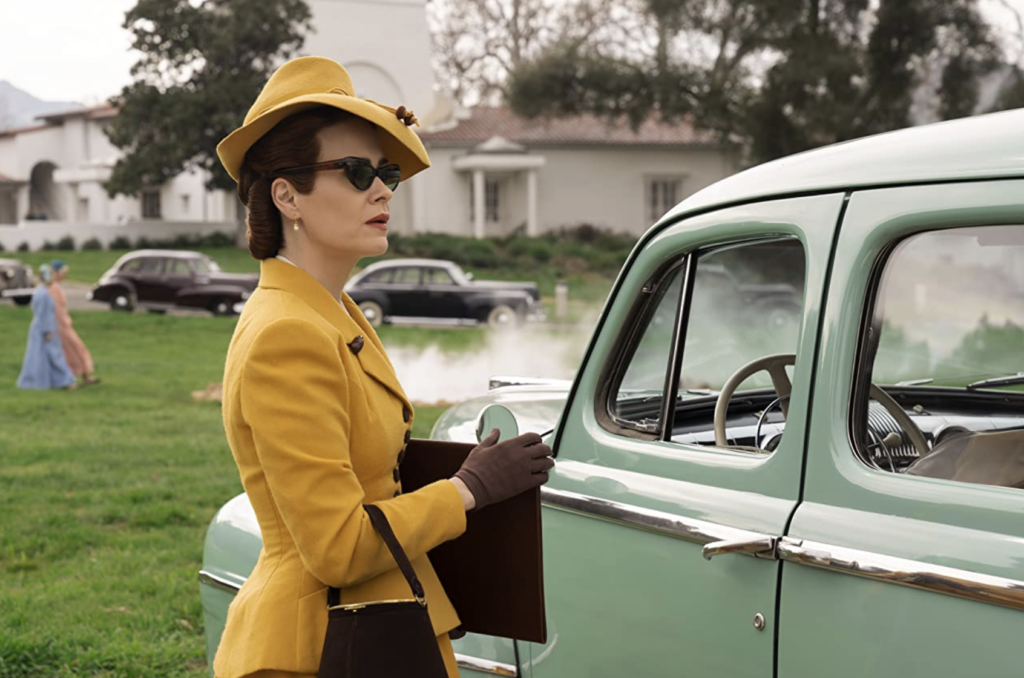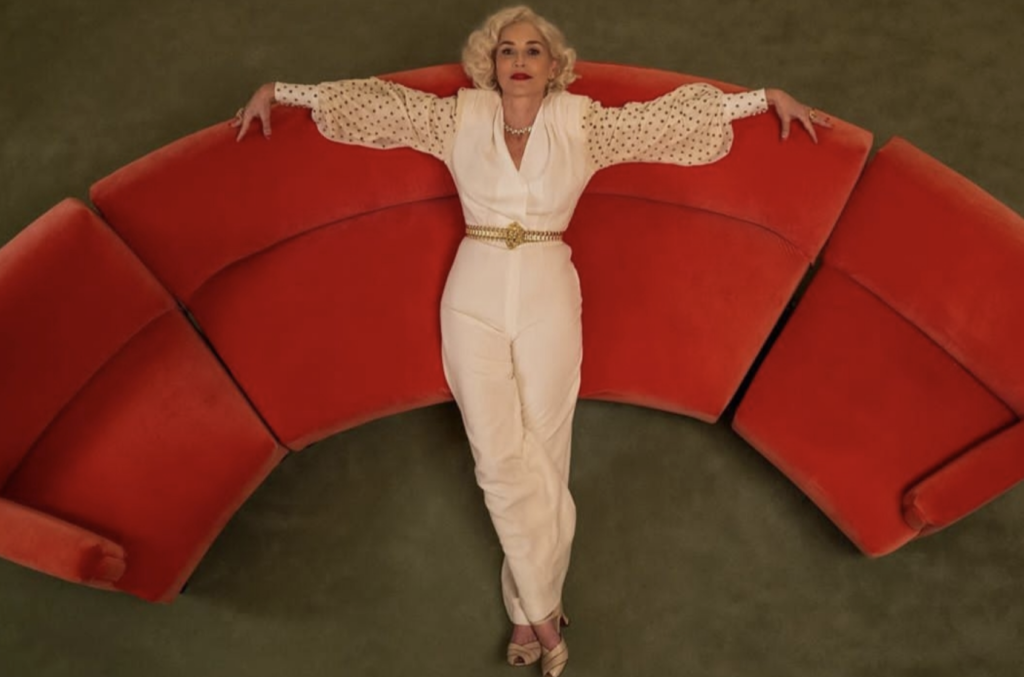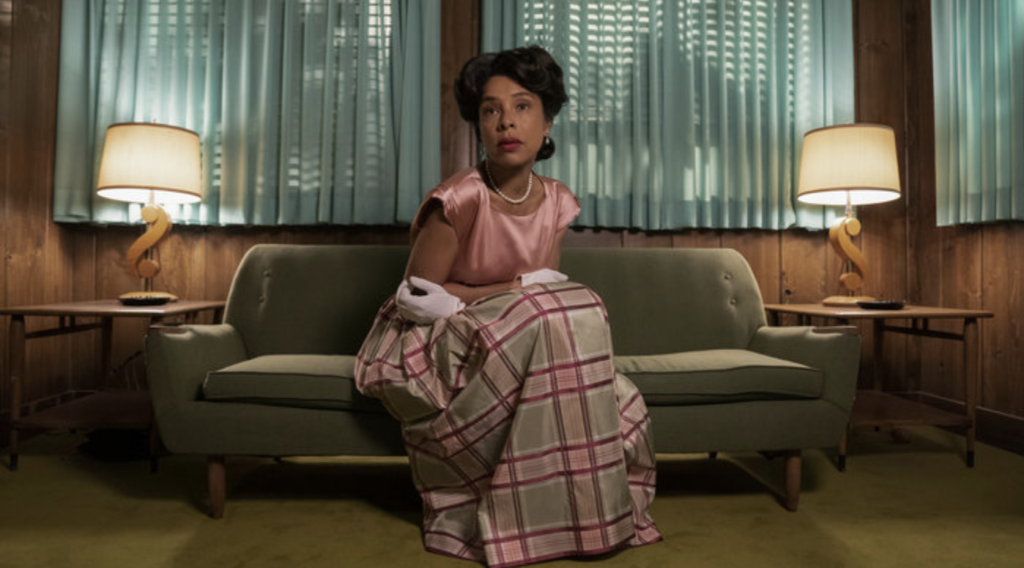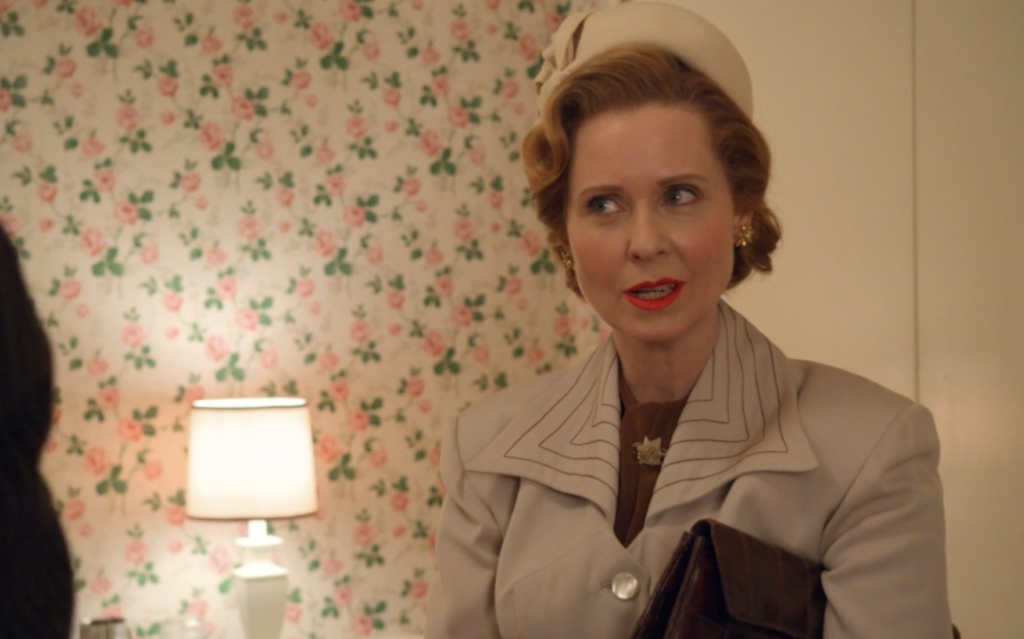By Anne Brodie
Ryan Murphy, the man behind American Horror Story, Hollywood, Pose, Glee and Feud: Bette and Joan digs up a reviled movie character from 44 years ago for his latest series spectacular Ratched on Netflix. Milos Forman’s groundbreaking film One Flew Over the Cuckoo’s Nest starred Louise Fletcher as psychiatric Nurse Ratched, wicked through and through. Murphy’s Ratched with Sarah Paulson in the title role is Mildred Ratched’s origins story. Sharon Stone, her monkey, Cynthia Nixon and Sophie Okonedo co-star as they find themselves at Lucia State Mental Hospital. It’s hard to know who is more troubled, the patients or the depraved staff, but the stars agreed that despite the subject matter, the shoot was a lovefest!
Sarah Paulson on being a Ryan Murphy regular: This was a different one for me because he was very, very interested in empowering me in this way that I had never experienced before, even in the traditional structure of working with him. I’ve never played a titular character before. I had never owned a piece of a show before. I’ve never been an executive producer of a show before and this is all because of him and it was very important to him. So it was a kind of an interesting thing to confront my hesitation and to deal with all of those moments and what does that look like for me and am I capable, am I ready, do I want it, what does it mean if I do; is that ambition. I mean, it was just like a whole kind of a myriad of things to contend with. But he always has been my greatest champion. It was an interesting experience to think beyond my own narrow view of just my own performance and think about the show and what the story was. Once again, he’s responsible for giving me the thing I had yet to experience in a work environment.

On playing Nurse Ratched, a cinematic icon: I think it’s safe to say that many people are at least familiar with, if not well versed in One Flew Over the Cuckoo’s Nest movie and Louise Fletcher’s performance and this sort of iconography that was etched and sketched by everybody in that movie. I think she’s in the top five AFI villains of all time in cinematic history.
So it’s no pressure and it’s just an opportunity for me to be humiliated. It’s not an issue. It’s fine. It’s totally fine. But I think it wouldn’t have been interesting to me to explore the parts of Mildred Ratched that aren’t porous. In the movie she’s so — she’s calcified. There’s a hardness. Nothing ekes out. I remember when I first saw the movie thinking years ago that she was absolutely a villain and evil and all this stuff and then when I re-watched it before we started, I thought this is a woman who was sort of a victim of a patriarchal infrastructure in this hospital that it’s quite possible and could it be considered that she didn’t have any choice about whether or not she can access her heart in her work, if she could bring her femininity and her womanhood to the job. What about considering that idea? And that she’s not a villain but she is a person who didn’t have any record. Who is that woman? So I wasn’t thinking of it so much as an opportunity to sort of counteract or have a female Don Draper or someone who was allowed to have those complexities, but it would be impossible to undertake it without thinking we’ve got to show something here that has yet to be seen and it’s entirely up to us. We can invent it because there is no backstory.

Sharon Stone’s first time with Ryan: Well, first of all, Ryan took me out to lunch and offered me this part and told me that he had written it for me, and I didn’t say anything. He was like, “Aren’t you excited?” and I said, “I don’t know yet.” Of course, I was excited that Ryan Murphy wanted me to work with him and do it but you never know how big the cliff is you’re going to have to jump off of when he says he’s writing you a part because I’ve seen all the other Ryan Murphy shows. So, I’m still in here going, “mm-hmm.” So it seemed like that and then of course I’m not really used to working in television, so I go to work and I normally have a script and a director and a plan and I’m kind of good at that. And then I got to work now and I don’t have scripts because one day you’re on episode 6 and the next day you’re on episode 1 and the next day you’re on episode 3 and you have three different directors and you haven’t gotten to read all of these episodes. So, it’s for me, this experience of coming to work on a Ryan show, when I started working, it was me and 300 men. Even my dresser was a man.
So, to come to work and have women, cameramen and sound people in every department and all these actresses I can do really strong work. I didn’t have this opportunity to work within these fine, subtle, intimate, layered, tender work of women and to be in the company of women. I didn’t even know what that would be like. And then to go to work where women are being empowered and offered opportunities, even the opportunities of the types of roles that were written for every single one of us and the way that the men’s roles are even respected at a whole different — the layers of emotional intelligence, it’s just a different thing. I’m just so grateful for it and I was so worn out from the other thing. I could do a triple salchow and skate backwards into the judges and get a three. So just to be able to be encouraged in a group, in a feminine group, and see women around me being lifted up to watch you, Sarah, have this, it’s so touching to me. It’s so meaningful to me and that this man is doing this for women. That’s what Ryan Murphy says to me.

Sophie Okonedo on playing a psychiatric patient at the Lucia Mental Institution: I didn’t really do much research around kind of mental illness if I’m honest because I thought, well, when she’s in it, she’s not thinking, oh, I’m going through this mental illness. I just got each character and just got to the heart of the character. It was in the script. It was all in there and all the rhythms of how everyone talks was written. And then I sort of worked from the script sort of backwards and then just kind of made each person kind of have fun, kind of filling in the kind of colouring book of their life. And then I just played each one like that was the thing, that’s the character I’m playing and then didn’t really worry about Charlotte being underneath or anything. And so building this character, you have to find out what it is she’s covering up to begin with and then what she’s covered it with and then what were those failures that made the character so insecure.

Cynthia Nixon puts Ratched’s world in context: Almost every other character has many different parts of themselves and that they’re trying to kill or stamp out or suppress a bunch of those. Gwendolyn is really the opposite. She knows she’s got at least four or five pieces of her personality, but meeting Mildred is kind of the key that unlocks the door. She realizes she has to integrate all these parts of her personality and things for the first time. It could be possible. One of the overarching themes of Ratched is not only the brutal treatments that were used against people who are deemed mentally ill, but what fell under the umbrella of mental illness and what was defined as mental illness. Certainly, being queer is front and center and we have so many different examples of it in the story but we have characters who have turned to murder because literally that was the only way they could survive or developed other personalities as a way to not just sink and disappear and self-destruct. So I think that obviously we have all these gay examples of characters who are persecuted for their gayness, but I think the bigger umbrella is people who, for whatever reason, their behaviour doesn’t fit in a very narrow 1940s, 1950s acceptable box and what our medical establishment chose to do about it.